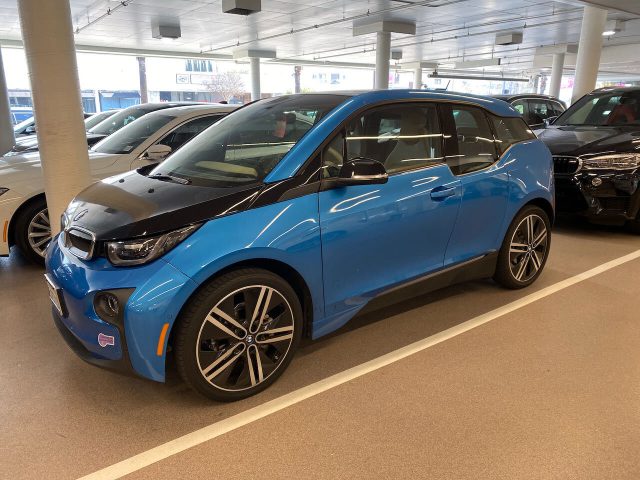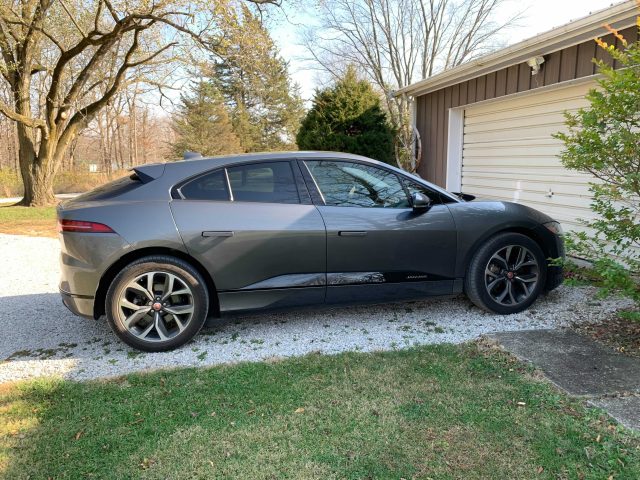
On Friday the 13th my wife and I went to a Kia dealership to take delivery of a Kia Niro. Taking one of the last 2019 Niros on the lot, we paid $32,900 for a car that lists for $41,000. Even better, when we file our taxes next spring, we'll get a $7,500 credit from Uncle Sam. So the after-tax cost will be just $25,400.
The options for electric vehicles have gotten dramatically better since we last went car shopping in 2017. I wanted to buy an electric vehicle back then too, but the pickings were slim. Tesla's Model S and Model X were way out of our budget. My wife declared the Chevy Bolt and Prius's plug-in hybrids to be too funny looking. The Nissan Leaf was then rated at 107 miles of range—far too little for road trips.
We test-drove Ford's C-MAX plug-in hybrid in 2017, but the plug-in feature seemed like an afterthought. The car had extra batteries stacked in the rear cargo area, leaving little room for cargo. So we settled for a Subaru Impreza with an internal combustion engine. Cost: $25,200.
When we started looking for our second car this August, the options were a lot better. There were enough pure battery electric vehicles on the market that we didn't even consider plug-in hybrids. My wife (the primary driver) test-drove an electric Mini, a BMW i3, a Nissan Leaf, a Hyundai Kona, and a Kia Niro.
All of these vehicles were available for well under $40,000—and under $30,000 once you factor in the tax credit.
Several factors ultimately sold her on the Kia. It had more interior space and longer range than the Mini and the BMW. These weren't must-have features since we could still use the Impreza for road trips, but they helped. More importantly, she found the Niro to have the most comfortable and enjoyable drive of any of the cars she tried. And she was impressed by the elegant interior.
It's a great time to buy an electric vehicle

In 2017, buying a battery electric car meant making sacrifices. There weren't many options on the market, and consumers faced choices between short range and a high sticker price.
Today there are many more options on the market and they offer dramatically better value for the money. You can find electric vehicles to meet a wider range of customer needs and at a wider range of price points. Electric cars are approaching price parity with conventional gas-guzzlers. Once you factor in the $7,500 tax credit, some have arguably reached it. Our Kia Niro EV doesn't quite have the range of our Subaru Impreza, but it's a nicer car in every other respect. And the net cost was almost exactly the same.
Ars Technica's Kyle Orland also purchased an electric vehicle recently. He bought a Nissan Leaf last year. The Leaf has been on the market for almost a decade, and it has boasted steadily improving range. Today they are rated for between 150 and 220 miles of range.
"The one thing that gave us pause was the range," Orland says. "But once we actually looked at how we drive, there were maybe five trips a year when we were driving more than even 150 miles." He and his wife were planning to keep their old car—a gas-powered Toyota Camry—so they could take that on road trips.
He considered the Chevy Bolt and the BMW i3. But Orland dismissed the Bolt because it got poor reviews, and he wasn't convinced the BMW was worth the higher price tag.
"We were looking for a relatively cheap car," Orland said. "We're not huge car people."
Orland says he was pleasantly surprised at the peppiness of the Leaf. His driving experience belied the stereotype that affordable electric cars were glorified golf carts. "When I go back to the Camry now, the handling and the acceleration just seems kind of sluggish," he says.
Another Ars writer, Jennifer Ouellette, bought a used 2017 BMW i3 last year. She paid $35,000 for the electric car, which had been part of a corporate fleet and only had 1,700 miles on it. The $7,500 tax credit is only available to buyers of new cars.
Like Orland, Ouellette was initially concerned about the short range of the car. But she realized that she and her husband would mostly use it for commuting and running errands. Like Orland, they also had a second car they could take for longer trips.
"It's small and sporty, with great visibility and terrific interior cabin design," she told me. "It handles really well, with active braking, and has solid acceleration."
More options at the high end too

Ars Technica's Eric Bangeman fell in love with the Jaguar I-PACE after reviewing it for Ars last year. While Orland and I mostly wanted cars that could get us from point A to point B at a reasonable price, Bangeman was more demanding.
"I wanted something that was fun to drive because that's an important part of owning a car for me," he said. He was willing to pay a premium for a great experience. He ultimately paid $67,000 for the vehicle with help from a $3,000 trade-in credit for his 2009 Toyota Prius. He got a $7,500 credit on his taxes the next year.
Bangeman had test driven a friend's Tesla Model S, but he said he enjoyed driving the Jaguar more. "The I-Pace was the complete package on looks, range, performance, and interior," he told me. In his opinion, the interior of the Model S was "not as refined."
The I-PACE's relatively long range—around 230 miles—was also a consideration. He regularly makes weekend trips of about 200 miles. So while he found a lot to like about the Audi e-tron, its 200-mile range wasn't quite enough for his needs.
Options for higher-end electric vehicles have been steadily expanding. Audi has been expanding the electric e-tron line. For customers with money to burn, there's the Porsche Taycan.
And there are a lot more battery electric vehicles coming on the market in the US next year:
- Ford will soon begin deliveries on its Mach-E Mustang and is working on an electric F-150 pickup.
- Electric startup Rivian is aiming to ship in 2021 (Tesla's Cybertruck probably won't arrive before 2022).
- Volvo's XC-40 SUV is expected to be released in the coming months.
- Mercedes-Benz has several models on the way in 2021.
- Volkswagen's ID.4 crossover is scheduled to come to the US market next year.
- Startup Lucid is aiming to bring the Lucid Air to market in 2021.
All these options will enable more customers to find something that fits their needs and their budgets.
That $7,500 tax credit may not last forever

The federal government offers a $7,500 tax credit for the first 200,000 vehicles a manufacturer sells. After that threshold is reached, the subsidy declines to zero over a year.
My wife and I didn't seriously consider Tesla's Model 3 or the Chevy Bolt because they have both already hit the 200,000-vehicle limit and had their tax credits phased out. So while they had similar sticker prices to our other options, the net cost to us would have been much higher.
If the next couple of years see a boom in electric vehicle sales, as many car companies are hoping, we'll start to see other companies hitting the same limit. Official figures are hard to find, but one unofficial tally from a year ago found Nissan, Ford, and Toyota as the top-selling BEV makers that were still credit-eligible.
Nissan was in the lead, with about 50,000 US vehicle sales to go before hitting 200,000. US sales of the Nissan Leaf have been anemic in 2020, so Nissan customers may enjoy the credit for another year or two. But only Nissan and the IRS know for sure.
The same is true of Ford and Toyota. Both had sold more than 100,000 vehicles by the end of 2019. They are unlikely to reach the 200,000 limit in 2020 or 2021, but might do so soon after that.
The bottom line is that the next year or two is likely to be a golden age for buying electric vehicles. Consumers will have a lot of good options, and they'll also benefit from the tax credit. There will likely be even more electric cars on the market in 2022 and 2023, but by then the most popular car models may not be eligible for help from Uncle Sam.
On the other hand, it's possible that President-elect Joe Biden will extend the credit. According to his campaign website, Biden wants to "restore the full electric vehicle tax credit to incentivize the purchase of these vehicles." It's not entirely clear what that means, but it may mean making Tesla and GM vehicles eligible for the credit again and preventing a phase-out for other carmakers. Of course, if Republicans retain control of the Senate, Biden would likely need help from Senate Majority Leader Mitch McConnell to put that into practice, so it's far from a sure thing.
"electric" - Google News
November 22, 2020 at 09:30PM
https://ift.tt/3953cpf
Four Ars staffers bought electric cars recently—here’s what we got - Ars Technica
"electric" - Google News
https://ift.tt/2yk35WT
https://ift.tt/2YsSbsy
Bagikan Berita Ini














0 Response to "Four Ars staffers bought electric cars recently—here’s what we got - Ars Technica"
Post a Comment